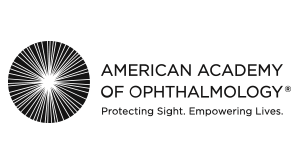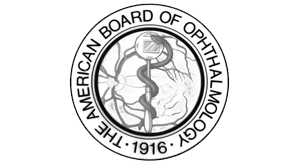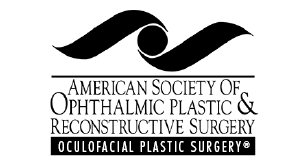Tearing and Tear Duct Surgery and Treatments


When patients suffer from tearing, it is caused either by overproduction of tears or inadequate drainage.
In the case of overproduction, dry or irritated eyes signal increased production of tears from the lacrimal gland – more than what your drainage system can handle.
Often, simple changes such as increased artificial tear use or allergy drops can solve this problem. Other times, a surgical approach to fixing the ocular irritant, such as eyelid laxity or eyelid malposition, is required to alleviate the tearing.
In the case of inadequate tear drainage, there is often a blockage somewhere within the lacrimal drainage system (puncta, canaliculi, and nasolacrimal duct). This can be caused by punctal or canalicular stenosis, stones within the canaliculi (caused by chronic infection), retained punctal plugs within the canaliculi, infection in the sac (dacryocystitis), or nasolacrimal duct obstruction (caused by chronic inflammation that may be related to environmental exposure, nasal inflammation or chronic sinus disease).
All of these conditions require surgical repair, often with the placement of temporary “stents” that stay in place for a number of months following surgery and can be removed safely and comfortably in the clinic.
Sometimes, the eyelid blink is poor because of eyelid laxity or eyelid muscle weakness, resulting in a poor lacrimal pump function. The pump function can be improved with an eyelid tightening procedure.
Punctal plugs are small silicone plugs that sit in the tear drainage hole (punctum) to block the drainage of tears. Essentially, these work as a plug in your sink drain works. For patients with dry eyes, this is a very effective solution to help keep tears on the eye surface for longer.
This is a procedure that can be performed in-office with little discomfort.
Similarly to punctal plugs, thermal punctal occlusion is a way of blocking the tears from draining off of the eye surface. This is a treatment for dry eyes. Thermal punctal occlusion is a permanent closure of the tear drainage hole, while punctal plugs are temporary (though they can last for years).
This is a procedure that can be done in our offices with the use of a cauterizing instrument. An injection of local anesthetic will be used beforehand for improved comfort during the procedure.
Punctal snip procedure is a way of opening the tear drainage holes. This is beneficial to patients who have tearing due to insufficient drainage of their tears. The need for this procedure can be identified based on in-clinic examination of the tear drainage system.
Punctal snip procedure can be done in-office, with an injection of local anesthetic prior to beginning the procedure. The puncta, or tear drainage holes, will be opened using medical scissors to aid in tear drainage.
For patients who have undergone trauma to their eyelids that affects the tear drainage system, it is often necessary to rebuild or repair the passageway so that the patients do not suffer from long-term tearing.
Repairing the tear drainage system can be quite uncomfortable, and so this procedure is most commonly performed in a hospital or outpatient surgery center with anesthesia. A stent will be placed and remain for 6 weeks to 6 months, depending on the severity of the trauma and repair, and this stent will help allow for full healing of the tear drainage system. The stent will be removed in the clinic at a follow-up visit.
The nasolacrimal duct is a bony duct connecting the lacrimal sac and the inside of the nose. It is the longest part of the tear drainage system. With age, viral infections, sinusitis, allergies, trauma and general exposure to the elements, the duct can narrow until it eventually closes completely. Narrowing of the duct can cause tearing and infection. Reopening the duct may be possible through a minimally invasive procedure to dilate and stent the lacrimal drainage system. If the procedure fails, or the duct closes completely, then a DCR surgery is required.
Dacryocystorhinostomy (DCR) is a surgical procedure performed to treat nasolacrimal duct obstruction, a condition where tears cannot drain properly from the eye into the nose, leading to chronic tearing (epiphora) or recurrent infections. DCR can be conducted via two main approaches: external or endonasal. In external DCR, an incision is made on the side of the nose, near the lacrimal sac, to create a direct pathway between the lacrimal sac and the nasal cavity, bypassing the obstructed nasolacrimal duct. This approach has a high success rate and allows for direct visualization of the surgical area.
Endonasal DCR, on the other hand, is a less invasive technique performed entirely through the nasal cavity using endoscopic equipment. This method avoids external scarring and typically involves a shorter recovery time, but it requires specialized skills and equipment. Both procedures aim to create a new drainage route for tears to alleviate symptoms effectively. The choice between external and endonasal DCR depends on various factors, including the specific anatomy of the patient and the cause of the obstruction.
Watch the External DCR video from the American Academy of Ophthalmology.
Watch the Endoscopic DCR video from the American Academy of Ophthalmology.
Conjunctivodacryocystorhinostomy (CDCR) surgery refers to a complete bypass of the native tear drainage system. This surgery is reserved for recalcitrant cases of tearing due to having no tear drainage system intact. Patients who have no functioning tear drainage system have likely had extensive trauma, prior surgery for cancer removal, or chemotherapy to the area. This surgery utilizes a glass tube to create a new path for tear drainage from the eye surface into the nose, where tears normally drain.
CDCR or Jones Tube placement surgery is the last resort after other attempted surgical repairs of the tear drainage system, such as DCR. This is a surgical procedure performed under general anesthesia. The Jones Tube will stay in place forever and may need to be adjusted or replaced over time. Learn more about all of our Functional and Reconstructive treatments.
In summary, there are two main etiologies of tearing: overproduction and poor drainage. Overproduction of tears is often caused by irritation of the ocular surface and can be treated medically. Poor tear drainage, on the other hand, often requires a procedural or surgical repair. All etiologies will be considered and evaluated during clinic visits.
If you have a tearing issue, schedule an appointment to see us.







